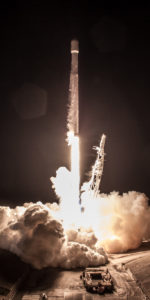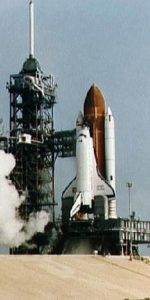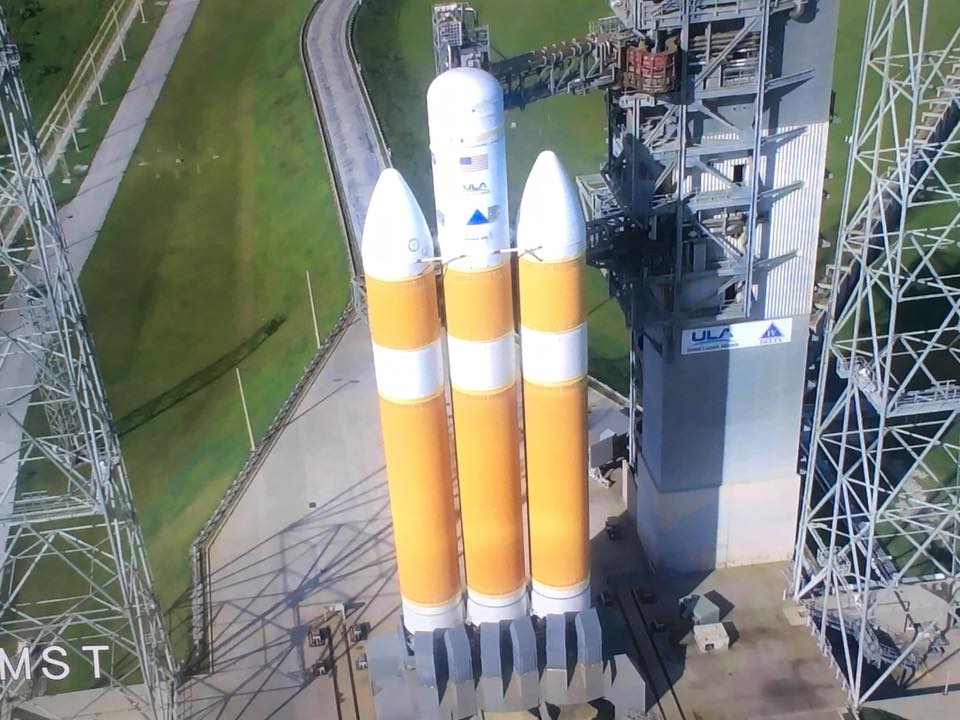
The United Launch Alliance (ULA) rocket slated to launch humanity’s first mission to ‘touch’ a star is spending this week undergoing critical pre-flight testing with two Wet Dress Rehearsals (WDR), or practice countdowns, at Space Launch Complex 37 at Cape Canaveral Air Force Station in Florida, to ensure everything is GO for a launch attempt next month with NASA’s Parker Solar Probe spacecraft.
Currently the largest and most powerful rocket used by NASA, the 177-foot tall Delta IV Heavy (without payload fairing) was rolled out from its Horizontal Integration Facility and raised atop launch pad 37B back on April 17, and has since been undergoing preparations for a launch attempt as soon as August 4, with liftoff scheduled for shortly after 4:00 a.m. EDT.
ULA conducted a successful initial WDR on Monday, July 2, which focused on “first stage objectives” with fueling of the vehicle’s three 134-foot tall Common Booster Cores, which are powered by a trio of RS-68A cryogenic liquid hydrogen/liquid oxygen burning engines.
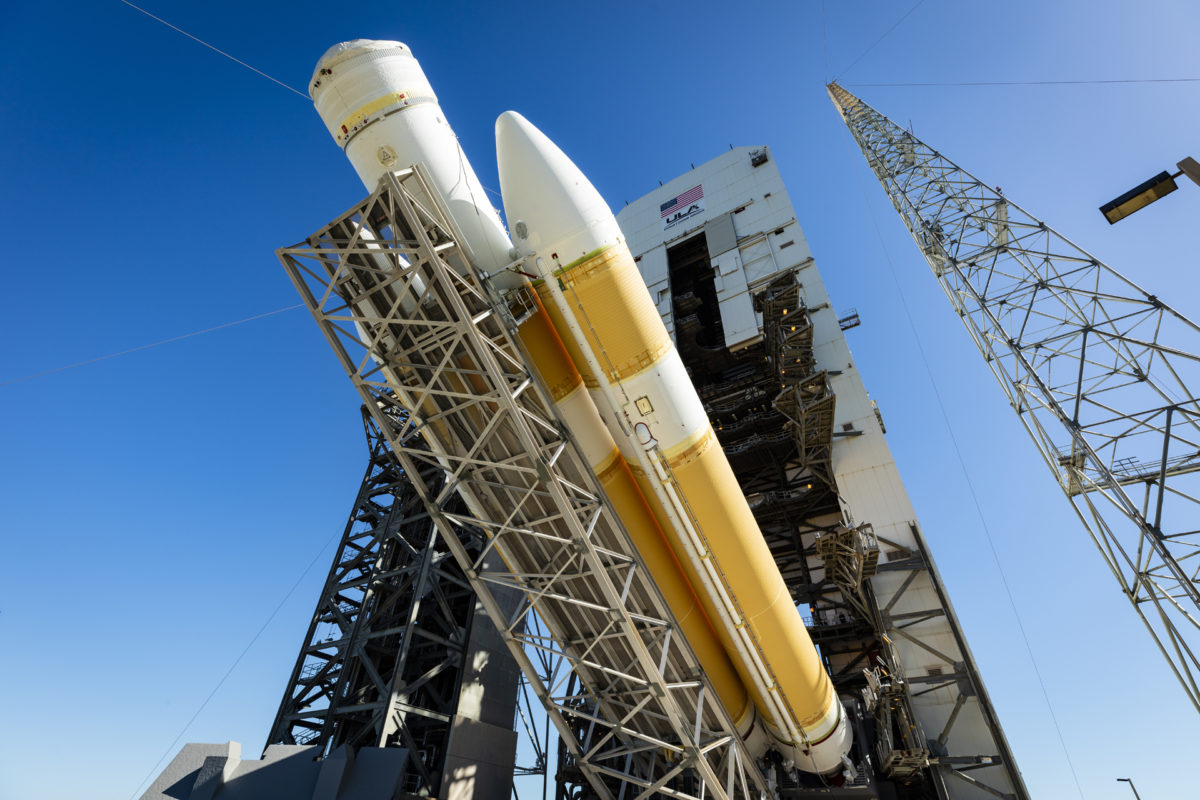
Today (Friday, July 6), teams are conducting another WDR, a full blown countdown to a simulated liftoff, aiming “to complete all objectives including second stage tanking,” according to ULA. The rocket’s second stage is powered by a single cryogenic liquid hydrogen/liquid oxygen burning RL10 engine.
A WDR helps uncover any issues and validates that the launcher, systems, launch team and ground support equipment are all ready for flight, and ULA says so far so good; on their end all is on track for a launch attempt no earlier than August 4.
Built by the Johns Hopkins Applied Physics Laboratory in Laurel, Maryland, the car-sized spacecraft demands a lot from the launch; Parker Solar Probe will be the fastest human-made object in the solar system when it makes its closest approaches to the sun, traveling at speeds of up to 430,000 miles per hour (700,000 kilometers per hour) as it swoops through the Sun’s atmosphere 24 times over a period of 7 years, or as fast as traveling from New York City to Tokyo in less than one minute.
Using the gravitational tug of Venus to gradually shrink its orbit, the spacecraft will come closer to our star than any spacecraft has before, facing brutal heat and radiation, in order to provide the first ever samplings of a star’s corona, which is visible to the human eye during a total solar eclipse and can reach temperatures upwards of 10 million degrees Fahrenheit.
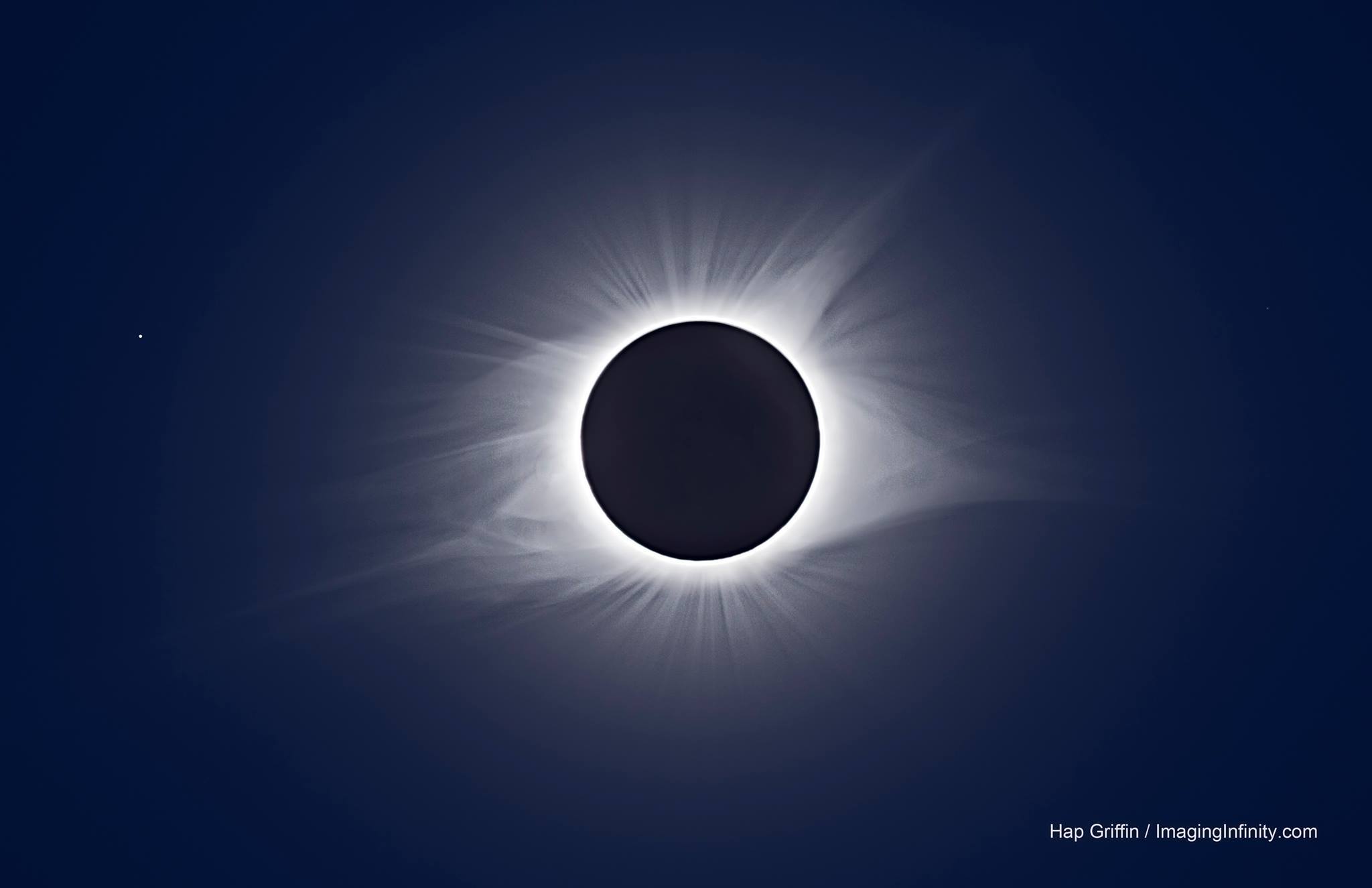
But in order to do this, the spacecraft demands an extremely high energy launch, and so the Delta IV Heavy’s capability will be augmented by a powerful third stage from Northrop Grumman Innovation Systems.
“Parker Solar Probe is going to revolutionize our understanding of the Sun, the only star we can study up close,” said Nicola Fox, project scientist for Parker Solar Probe at the Johns Hopkins Applied Physics Lab in Laurel, Maryland. “The mission undertakes one of the most extreme journeys of exploration ever tackled by a human-made object.”
The ultimate goal overall is to understand how the Sun works and how it affects the space environment, to the point of predictability. We’ll have more in-depth articles in the coming weeks on specifics about the science Parker Solar Probe will conduct, and how it will do so, including interviews with mission team members (so stay tuned).
The spacecraft itself is currently in a clean room at Astrotech Space Operations in nearby Titusville, Florida, where it arrived from NASA’s Goddard Space Flight Center in Greenbelt, Maryland on April 2, via a U.S. Air Force C-17 aircraft, for final comprehensive testing, assembly, fueling and mating to the Delta-IV Heavy’s thirst stage.
The spacecraft is expected to be transported to Launch Complex 37 to meet its rocket in mid-July.
– AmericaSpace will visit the clean room at Astrotech to see the spacecraft for ourselves and interview project scientists and engineers on July 13, stay tuned.
FOLLOW AmericaSpace on Facebook and Twitter!
.
Missions » Parker Solar Probe »



